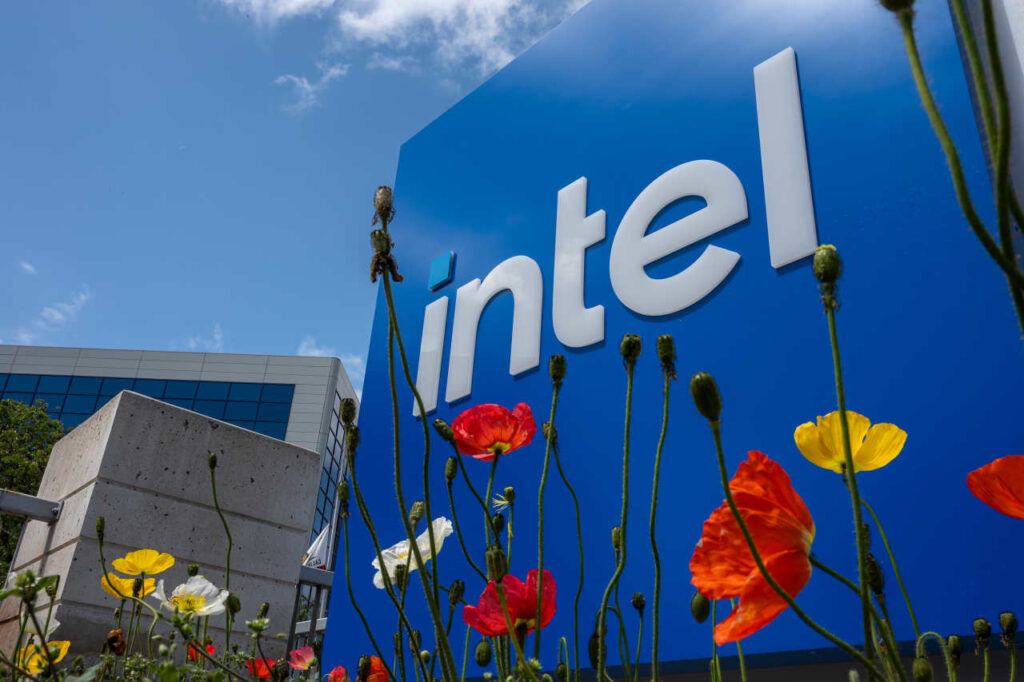Intel Corporation has unveiled a sweeping restructuring plan aimed at reversing its declining market position amid rapid competition in artificial intelligence (AI) and semiconductor manufacturing. The company announced it will lay off 15% of its global workforce—approximately 24,000 jobs—and cancel multi‑billion‑dollar factory projects in Europe and the U.S.
In its Q2 2025 results, Intel posted $12.86–$12.9 billion in revenue, slightly ahead of consensus expectations, yet absorbed a sharp net loss of $441 million to $2.9 billion, largely due to $1.9 billion in restructuring charges and impairments. This marked a steep fall from the small profit it reported a year earlier.
CEO Lip‑Bu Tan, who took charge in March 2025, emphasized that the firm will no longer support expansion without confirmed customer demand—declaring an end to the era of “blank check” spending on chip fabs and platform development (notably 14A and 18A process technologies) until demand is locked in.
The layoff targets include middle management across all divisions, shrinking Intel’s headcount from ~109,000 in 2024 down to ~75,000 by end‑2025, reflecting a ~15% reduction globally. A specific focus is on Intel Foundry, with an estimated 10,000 to 20,000 roles impacted globally (roughly 15–20% of that division), spanning technicians, engineers, and factory support roles. No severance or voluntary buyouts will be offered, with decisions based on performance and strategic alignment. Intel has officially canceled planned fab projects in Germany and Poland, delayed construction in Ohio, and shut down packaging operations in Costa Rica—moving some functions to Vietnam and Malaysia.
Intel is doubling down on core pivot areas:
| Strategic Area | Details |
|---|---|
| AI and Foundry Business | Foundry revenue grew 3% in Q2 to $4.4B—but Intel remains far behind TSMC in client traction. |
| Technology Development | Delay or pause in the rollout of next-gen nodes—like 14A and 18A—if anchor customers aren’t secured. |
| Organizational Streamline | Reduction of management by ~50%, with a full return-to-office mandate starting September to. |
Analysts warn the AI boom has largely benefited Nvidia, AMD, and TSMC—not Intel, which has yet to meaningfully capitalize on generative AI demand.
Intel shares fell nearly 4% after hours following the earnings call—closing the day up ~13% year-to-date. Despite outperforming on revenue expectations, the net loss and aggressive restructuring plan rattled investors.
Analysts at Benchmark Research maintain a “Hold” rating, citing uncertainty over market share recovery and external foundry reliance if internal execution continues to falter.
“These decisions reflect painful but necessary discipline,” said an analyst at Moor Insights. “Intel must align its operations to real demand—or risk bleeding further cash chasing future tech without customer backing.”
Others emphasize the broader context:
The company’s earlier $1.6B Q2 loss under former CEO Pat Gelsinger had already prompted a 15,000‑job cut in 2024—part of a longer pattern of retreat from leading-edge ambitions without roadmap delivery.
Faced with mounting losses and faltering leadership in AI chip making, Intel’s dramatic cost-cutting and strategic reset represent a high-stakes gamble. By halting unchecked expansion and refocusing on demand-driven investments, CEO Lip‑Bu Tan aims to forge a leaner, more disciplined Intel. Success will hinge on execution—and whether the company can reclaim relevance in a silicon boom it largely missed.






